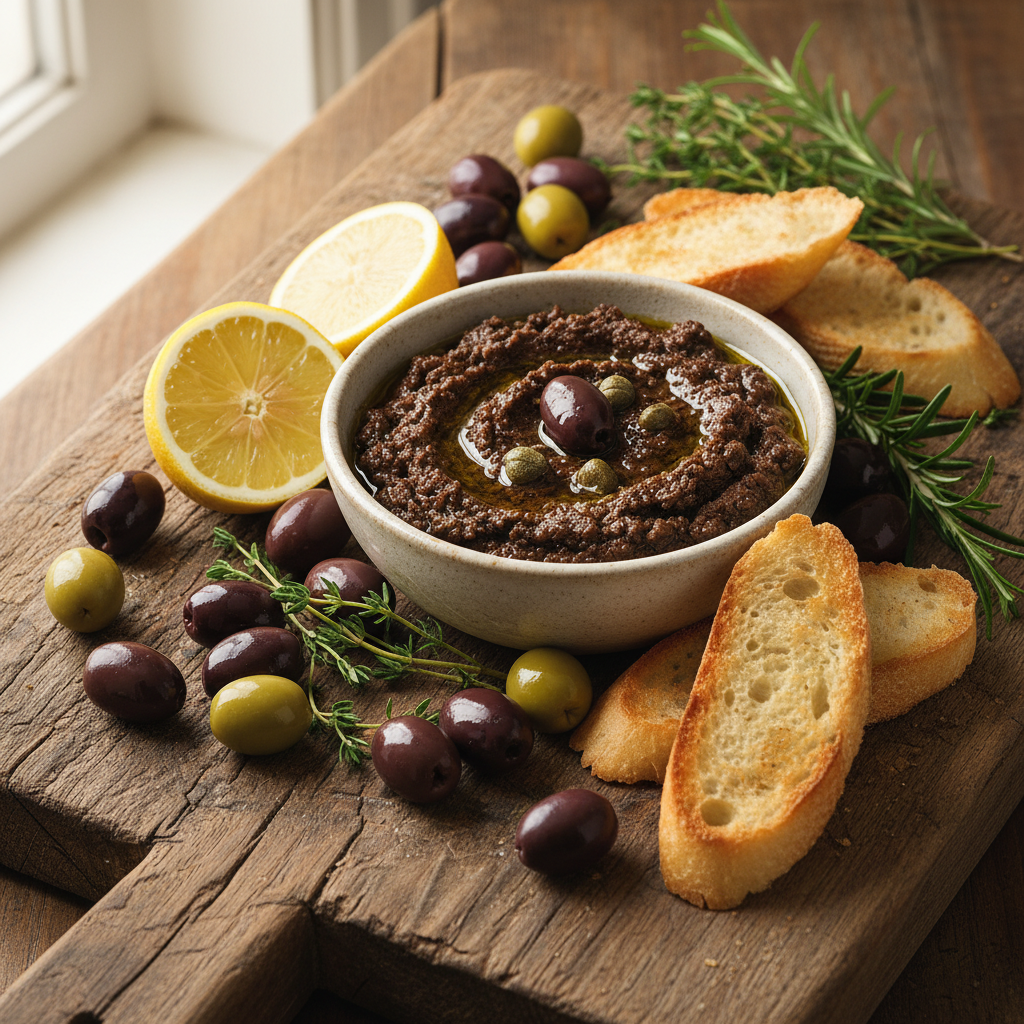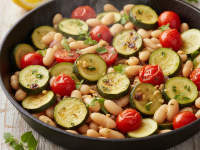Hey there, fellow food lovers! Have you ever found yourself staring at a jar of olive tapenade in the store, wondering if you could capture that rich, briny essence at home? Well, let me tell you, you absolutely can! And it’s not just about replicating it; it’s about making something infinitely better, fresher, and tailored exactly to your taste. Today, I’m thrilled to share my absolute favorite way to make what I lovingly call “olive pulp” tapenade – essentially, using the glorious flesh of olives to create a spread that transports you straight to the sun-drenched shores of the Mediterranean.
My journey with tapenade started quite unassumingly. I was at a small bistro in Provence, years ago, and ordered a simple appetizer – crusty bread with tapenade. The flavor explosion was incredible: salty, tangy, a hint of garlic, and that unmistakable olive richness. I was hooked! Upon returning home, I tried store-bought versions, but they always felt… flat. That’s when I decided to roll up my sleeves and experiment. And honestly, it’s one of the most rewarding kitchen experiments I’ve ever undertaken. The beauty of homemade tapenade lies in its simplicity and the incredible depth of flavor you can achieve with just a few quality ingredients.
What Exactly is Tapenade, Anyway?
Before we dive into the recipe, let’s quickly touch upon what tapenade actually is. Originating from the Provence region of France, tapenade is a savory spread primarily made from finely chopped or pureed olives, capers, and olive oil. The name “tapenade” itself comes from the Provençal word for capers, “tapenas.” Traditional versions often include anchovies, garlic, and herbs, all coming together to create a profoundly flavorful condiment. It’s versatile, robust, and the perfect embodiment of Mediterranean cuisine – simple ingredients combined to create something truly spectacular. And when I say “olive pulp,” I’m referring to the delicious, meaty part of the olive once the pit is removed. We’re going straight for that rich flavor!
Why Homemade is Always Better (My Personal Take)
I know, I know, it’s easy to grab a jar from the supermarket. But trust me on this one – homemade tapenade is a game-changer. For starters, you have complete control over the ingredients. No weird preservatives, no excessive sodium, just pure, wholesome goodness. You can choose the exact type of olives you love, adjust the saltiness, amp up the garlic, or even make it completely vegan. From my experience, the freshness of homemade tapenade is unparalleled. The vibrant flavors of freshly crushed garlic, bright lemon juice, and aromatic olive oil simply sing in a way that pre-packaged versions rarely can. Plus, there’s immense satisfaction in creating something so delicious from scratch. It truly elevates any dish you pair it with.
Gathering Your Mediterranean Arsenal: The Ingredients You’ll Need
The beauty of tapenade lies in its minimal yet powerful ingredient list. Quality is key here, so try to source the best you can find. Here’s what you’ll need for a batch that will make about 1.5 cups:
- 2 cups pitted olives: This is our “olive pulp.” I highly recommend a mix for depth of flavor. My personal go-to is a combination of Kalamata (for their robust, fruity notes) and good quality green olives (for a slightly brighter, tangier edge). You can also use Niçoise or Ligurian olives. Ensure they are well-drained.
- 2 tablespoons capers: Rinsed and drained. These add a crucial briny, salty punch.
- 2-3 anchovy fillets (optional, but highly recommended for authentic flavor): Don’t let these scare you! They melt into the tapenade, adding an incredible depth of umami without making it taste “fishy.” If you’re vegan or prefer to omit them, that’s perfectly fine.
- 2 cloves garlic: Peeled and roughly chopped. Adjust to your garlic preference – I sometimes sneak in an extra clove!
- 1/4 cup extra virgin olive oil: Use a good quality, fruity olive oil. This is a foundational flavor, so don’t skimp.
- 1 tablespoon fresh lemon juice: Adds brightness and cuts through the richness.
- 1 teaspoon fresh thyme leaves: Or 1/2 teaspoon dried. Rosemary works beautifully too!
- Freshly ground black pepper: To taste.
- Optional additions: A pinch of red pepper flakes for a little kick, or a tablespoon of sun-dried tomatoes (oil-packed, drained) for extra sweetness and depth.
My Secret to the Perfect Texture: The Blending Process
Now for the fun part – bringing it all together! You can use a food processor, which is my preferred method for efficiency, or a mortar and pestle for a more rustic, hand-pounded texture (though it requires a bit more elbow grease!).
Using a Food Processor:
- Combine the Solids: Add the pitted olives, rinsed capers, anchovy fillets (if using), chopped garlic, and fresh thyme leaves to the bowl of your food processor.
- Pulse, Don’t Puree: This is key! Pulse the mixture a few times. You want a chunky, spreadable texture, not a smooth paste. Keep pulsing in short bursts, scraping down the sides occasionally, until everything is finely chopped but still has some texture. My personal preference is to have some small olive pieces visible – it gives it a more satisfying mouthfeel.
- Drizzle in Olive Oil and Lemon Juice: With the food processor ruing on low, slowly drizzle in the extra virgin olive oil and fresh lemon juice. Continue to process just until everything is combined. Avoid over-processing here; you’re just bringing it together.
- Season and Taste: Transfer the tapenade to a small bowl. Add freshly ground black pepper to taste. Now, the most important step: taste it! This is your chance to adjust. Does it need more lemon? A tiny pinch of salt (remember, olives and capers are already salty)? Maybe a little more pepper? Adjust until it sings to your palate.
Using a Mortar and Pestle:
If you prefer a truly rustic feel, a mortar and pestle works wonderfully. Start by crushing the garlic and anchovies (if using) into a paste. Then, gradually add the olives, capers, and thyme, pounding and grinding until you reach your desired consistency. Finally, stir in the olive oil, lemon juice, and pepper. This method gives you a more textured result and is incredibly satisfying!
Beyond the Cracker: Creative Ways to Enjoy Your Tapenade
Once you’ve made your glorious tapenade, the possibilities are endless! It’s so much more than just a dip for crackers (though it excels at that!). Here are some of my favorite ways to enjoy it:
- Classic Bruschetta or Crostini: Spoon it generously onto toasted baguette slices or bruschetta. A little sprinkle of fresh basil or parsley takes it to the next level.
- Amazing Sandwich Spread: Ditch the mayo! Spread tapenade on sandwiches or wraps instead. It pairs beautifully with roasted chicken, fresh mozzarella, or grilled vegetables.
- With Grilled Meats or Fish: A dollop of tapenade on grilled salmon, chicken, or lamb chops adds an incredible burst of flavor. It’s particularly good with white fish like cod or halibut.
- Elevate Your Eggs: Stir a spoonful into scrambled eggs, spread it on an omelet, or even dollop it onto deviled eggs for a gourmet twist.
- Pasta Sauce Base: Thin it out with a little pasta water and olive oil for a quick and flavorful pasta sauce. Add some cherry tomatoes and fresh basil, and you’ve got a fantastic meal.
- Dip for Crudités: Serve it alongside an array of fresh vegetables like carrot sticks, celery, bell pepper strips, or cucumber slices for a healthy and vibrant snack.
- In Salads: Stir a small amount into vinaigrettes or potato/pasta salads for an unexpected flavor boost.
Troubleshooting & Customization: Making It Your Own
Making tapenade is forgiving, but here are a few tips and ways to make it truly yours:
- Too Salty? This can happen if your olives or capers are extra briny. Add a bit more lemon juice, a splash of water, or even a teaspoon of honey or maple syrup to balance the flavors.
- Too Bland? More garlic, a tiny pinch more salt (taste first!), or a dash of red wine vinegar can wake it up.
- Vegan Version: Simply omit the anchovies. The tapenade will still be incredibly flavorful thanks to the olives and capers.
- Herb Variations: While thyme is classic, don’t be afraid to experiment with fresh oregano, rosemary, or even a touch of marjoram.
- Add-ins: Sun-dried tomatoes, roasted red peppers, or even a handful of toasted pine nuts can add wonderful layers of flavor and texture.
Storing Your Golden Treasure
Your homemade olive tapenade will keep beautifully in an airtight container in the refrigerator for about 5-7 days. To extend its shelf life and keep it fresh, pour a thin layer of extra virgin olive oil over the surface before sealing the container. This creates a protective barrier. I’ve found it tastes best after the flavors have had a few hours (or even overnight) to meld, so making it ahead of time is a great idea!
There you have it – my go-to recipe for homemade olive pulp tapenade. It’s a small effort for a huge flavor payoff, transforming simple ingredients into a gourmet spread that will impress anyone you share it with (or, let’s be real, devour yourself!). I truly hope you give this a try and experience the joy of creating this Mediterranean gem in your own kitchen. Happy cooking!



